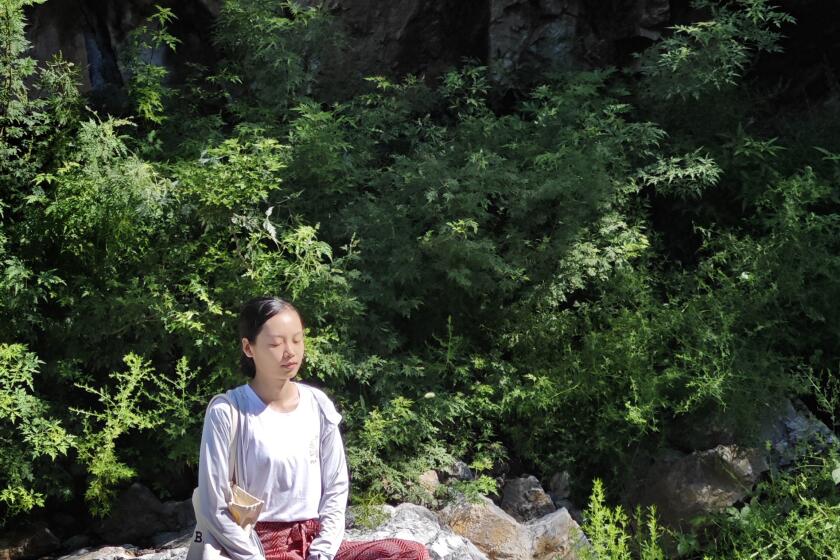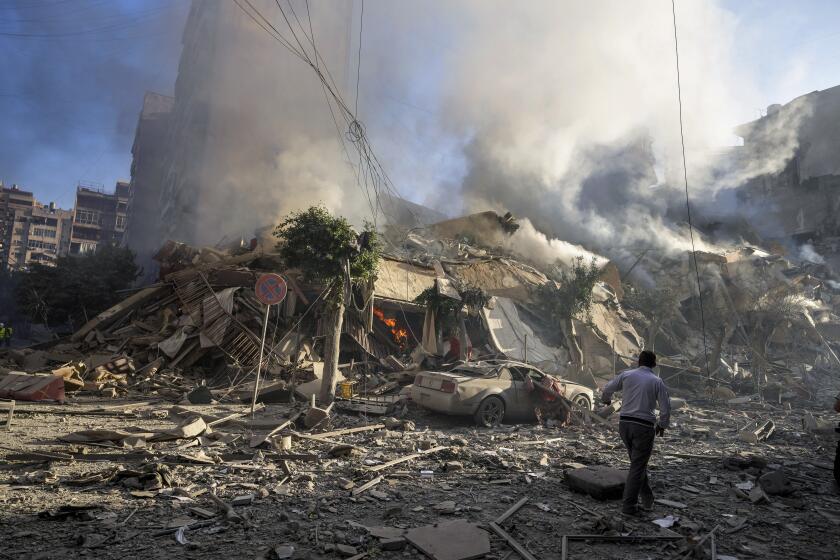Colombia attacks blamed on alliances of rebels with criminals
Reporting from Bogota, Colombia —
The death toll in five terrorist attacks in Colombia this week points to the increasing threat posed by unholy alliances between leftist rebels and criminal bands engaged in drug trafficking, killings and extortion, Colombian officials say.
The alliances extend over several regions of Colombia and present powerful threats to President Juan Manuel Santos’ efforts to end a decades-long conflict with insurgent groups and push through ambitious reforms addressing the social inequities that he says are at the root of the violence.
Defense Minister Juan Carlos Pinzon said Thursday that he believed the Revolutionary Armed Forces of Colombia, or FARC, and the Rastrojos narcotics gang were behind a motorcycle bomb that exploded Wednesday in front of a police station in the Pacific port city of Tumaco, killing 11 people and wounding 70.
“This is nothing but a defensive move by the FARC plotting with the Rastrojos criminal band to defend their narco-trafficking,” Pinzon said during a visit to Tumaco to survey the damage. The bomb blast was caused by an estimated 110 pounds of AN/FO, or ammonium nitrate/fuel oil, explosives that had been mounted on a motorcycle parked near the police station.
On Thursday, eight people, including six policemen, were killed in four attacks across Colombia. Authorities blamed the FARC, saying that in at least one case the rebels were working with a criminal gang.
“Unlike the right-wing paramilitary militias, which for ideological reasons steered clear of trafficking with leftist rebels, the new generation of gangs cooperates with them when expedient to secure coca crops, cocaine processing laboratories and the transit routes used to get the drugs to market,” one police intelligence officer recently told The Times.
Santos announced that he was sending 2,500 additional soldiers and marines to Tumaco to bolster security and said the attacks would not soften the government’s approach.
The Tumaco attack came a day after the FARC announced on its website that it was suspending plans to release six military and police hostages, some held since the late 1990s, citing the government’s refusal to use intermediary countries to effect the liberations.
The rebels and the Rastrojos (the Weeds) are believed to be jointly managing cocaine production and trafficking in Nariño, the southwestern border state of which Tumaco is the principal port. Their criminal activities don’t stop at drugs: The majority of businesses in the city are forced to pay protection money to stay open, according to the local chamber of commerce.
Police intelligence sources recently told The Times that rebel-narco alliances have been formed elsewhere in Colombia as well, including a suspected one between the FARC and the Urabeños gang to traffic drugs and shake down businesses along the Caribbean coast.
Last month, the Urabeños forced hundreds of businesses in several cities and towns in northern Colombia, including tourist mecca Santa Marta, to remain closed in a show of criminal power after theNew Year’s Daykilling by police of gang leader Juan de Dios Usuga.
The Rastrojos and Urabeños are the largest of half a dozen criminal bands that, along with the FARC, have come to the fore in Colombian drug trafficking since 31,000 paramilitary fighters were demobilized in a process that ended in 2006. The number of gangs is much reduced from the estimated 33 that existed immediately after the demobilization
Alliances don’t work everywhere, however. A spate of violence in the Catatumbo region of North Santander province near the Venezuelan border illustrates turf battles between the FARC and criminal gangs, including the so-called ERPAC gang, police investigators said.
At stake are extortion rackets, as well as drug transit routes to Venezuela, an important platform for shipment of Colombian cocaine to U.S. markets via Mexico and Central America. On Thursday, the FARC was accused of burning eight heavy trucks and earthmovers reportedly belonging to oil companies in the region. Santos last year threatened companies with expulsion if they pay extortion.
The Colombian government has mounted an aggressive effort to subdue criminal bands, making 3,054 arrests of suspected gang members in 2011, of whom 13% were demobilized former paramilitary members. The national police special intelligence unit formed to track the gangs’ movements was credited with locating Usuga onNew Year’s Daywith the use of informers and GPS chips.
Kraul and Gonzalez are special correspondents.
More to Read
Sign up for Essential California
The most important California stories and recommendations in your inbox every morning.
You may occasionally receive promotional content from the Los Angeles Times.










